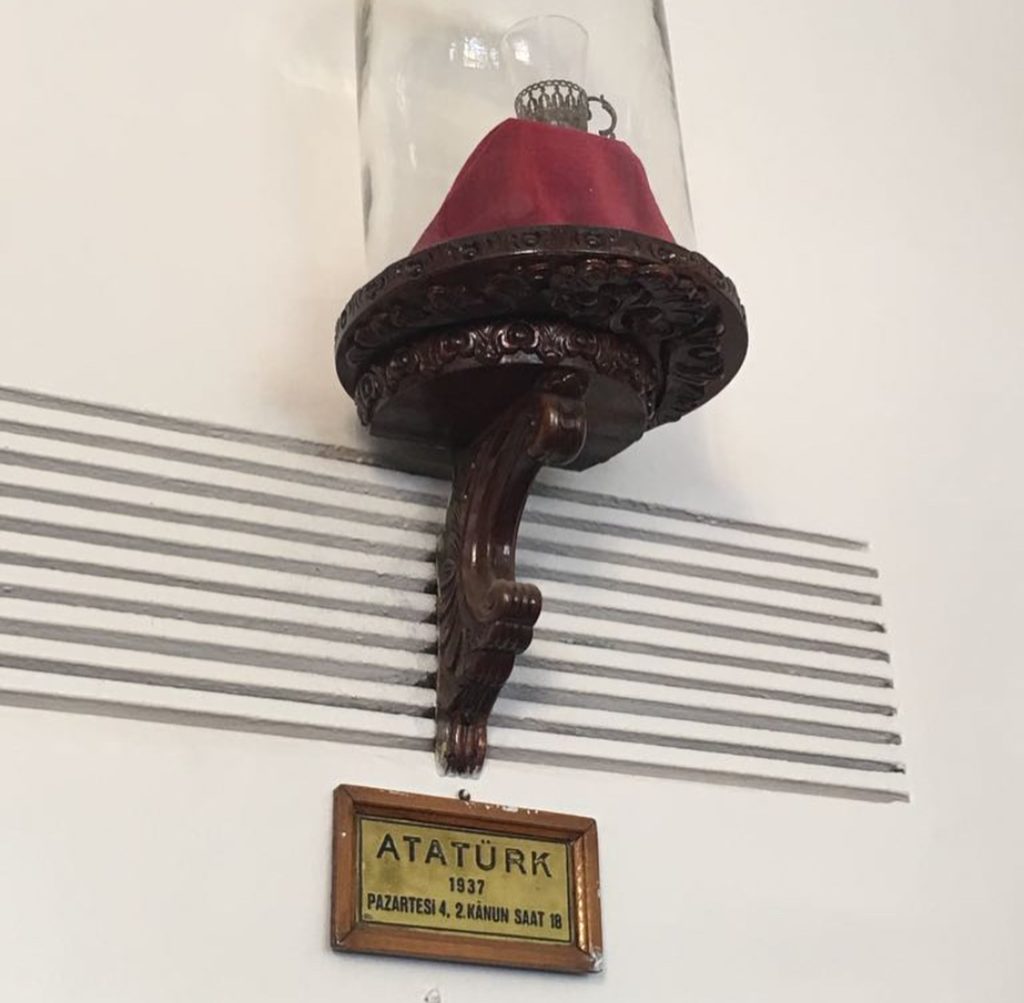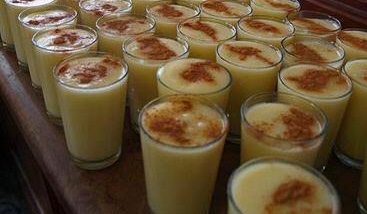The protagonist of the book A Strangeness in My Mind (2014), by the Turkish author and Nobel Laureate in Literature (2006) Orhan Pamuk, is a street vendor who sells Boza. In fact, he sells various types of food in the streets but, apart from his first love whom he has never forgotten, his true devotion is selling Boza during cold winter nights. I personally liked the book because it sketches a panorama of the changes that Istanbul went through in the past 40-50 years. But, not only for that. The book also took me back in time, to my childhood, when you often heard the cry of Boza vendors at night… Booozaaaa…
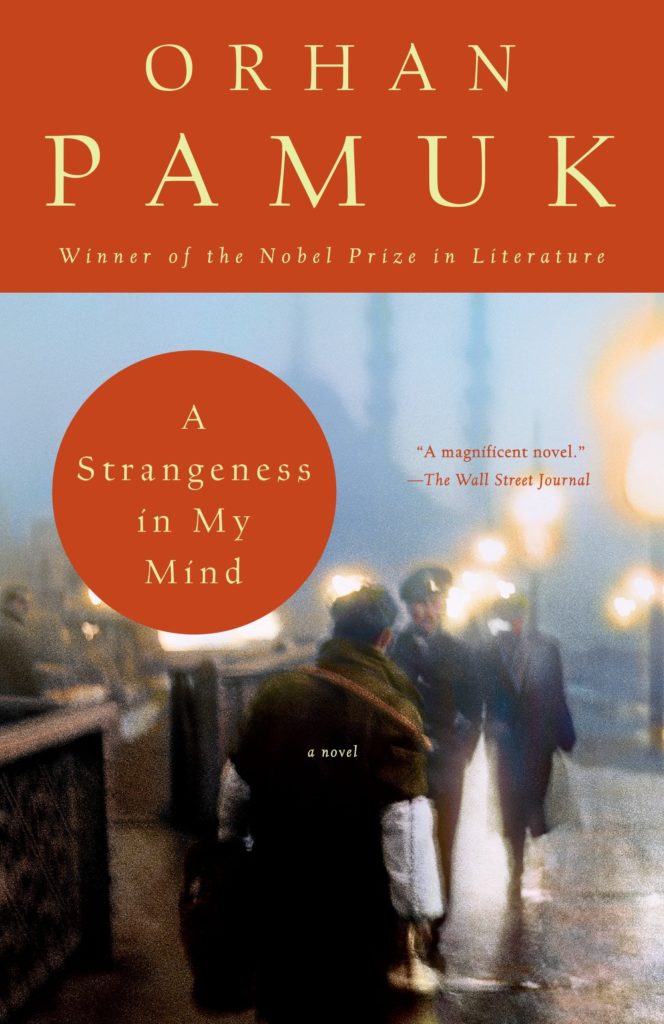
Boza is a traditional Turkish beverage with an origin that goes back to Central Asia, to the times before Turks migrated to the West and other parts of the world. It can also be encountered in other countries that were once under Ottoman reign even if the main ingredient which is originally millet is replaced by bulgur (pounded wheat), barley, corn or rarely rice, depending on the resources of the country. This means that, you might well encounter variations of Turkish Boza in the Balkan countries, the Middle East and Northern Africa.
Boza is a beverage that is rich in vitamins. It is said that it strengthens the immune system of the body against influenza in winter. The plentiful lactic acid bacteria also help with problems of digestion and constipation. The ingredients are millet, water and sugar. Due to the fermentation that takes place, the alcohol level in Boza is 2-6%, depending on the time between production and consumption. The longer the time spent on the shelf the higher is the level of alcohol. For that reason, some conservative Muslims have been against Boza, claiming that it is actually a kind of semi-produced beer and should therefore be prohibited because alcohol is not allowed in the Islam religion. It is said that, when Sultan Murat IV (1623-1640) banned the consumption of alcohol, even though he was fond of drinking himself, the number of Boza shops suddenly increased while the meyhane’s (literally meaning house of wine) were shut down. This is regarded by some people as another proof that Boza is in fact an alcoholic beverage. Nevertheless, Boza consumption has never ceased, neither in Ottoman times nor today in Turkey. It was and still is a popular winter beverage. Besides, getting drunk with Boza is really out of the question.
Boza is not a hot drink even though it is mostly produced and consumed in winter. Temperature can vary from room temperature to slightly cooler degrees. Some people may prefer it warmer. It is considered as a winter drink in Turkey due to the vitamins (mostly B types) it contains and its probiotic nature, all of which support a robust body in winter. However, in some countries it is also consumed in summer.
The taste of Boza, which I like very much, is difficult to describe. It is a mixture of a sweet and sour taste. A cream coloured, thick fluid that is served with sprinkled cinnamon and roasted chickpeas on top. So thick that you sometimes need the aid of a spoon. It is also customary to have roasted chickpeas on the side to nibble as well.
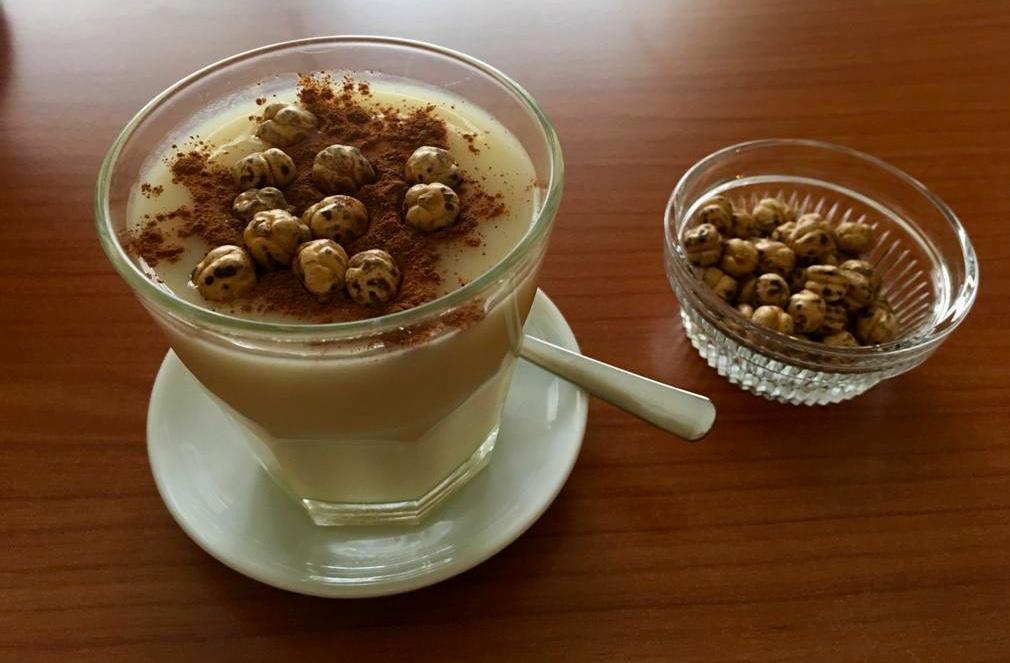
Like Mevlut Karataş in Orhan Pamuk’s book, traditionally Boza vendors were also the producers. They would make their Boza daily and hit the streets at night, crying out “Booozaaa” while making their way in cobblestone streets. The tradition continued in my childhood as well, even though there were hardly any cobblestones left. During cold and dark winter nights we would hear the vendor’s voice passing by. Sometimes the man would be called in and we children would watch him intently, half in awe, while he poured some Boza from his copper churn to a jug that was handed to him from the kitchen. The roasted chickpeas would not be forgotten. Believe it or not, I heard a Boza vendor’s voice in our district a couple of nights ago and could not help wondering whether he could possibly be earning any money. Nowadays, we buy hygienically produced and bottled Boza from supermarkets, bakeries or some shops (called kuruyemişçi in Turkish) where they sell nuts, seeds and dried fruit.
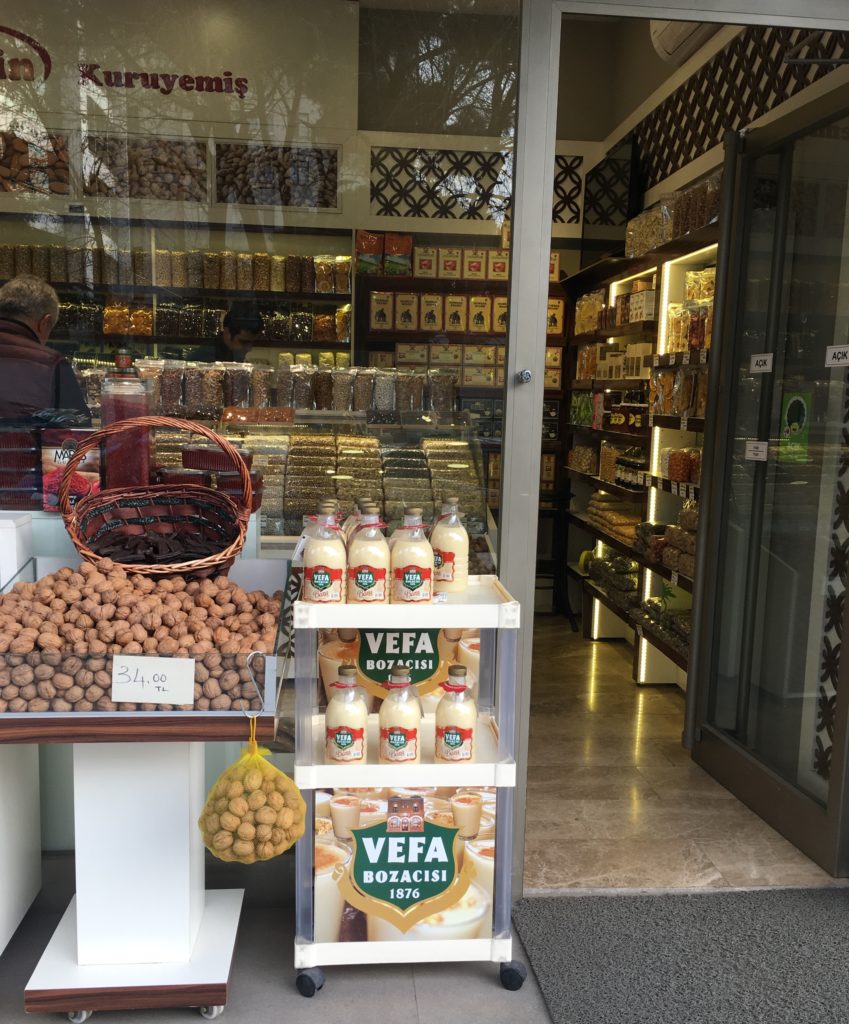
Some Boza producers were able to build their own brands over time. They became institutional and stood out among the many anonymous producers. One of these, Vefa Boza, became so successful that today, the Vefa brand is the first thing that comes to your mind when you think of Boza. The fame of Vefa Boza is in no way accidental. With its special recipe, it has a unique and most delicious taste.

The founder of Vefa Boza is Hacı Sadık Bey who immigrated from Prizren (in today’s Albania) to Istanbul in 1870. At the time, the Boza sold by around 200 street vendors in Istanbul was darker in colour, more liquid and sour. Haci Sadık Bey, who also joined these street vendors, invented his own secret recipe after a while. This thicker, sweet sour and light yellow in colour Boza became so popular that, people practically started waiting for him to come at street corners during winter nights.
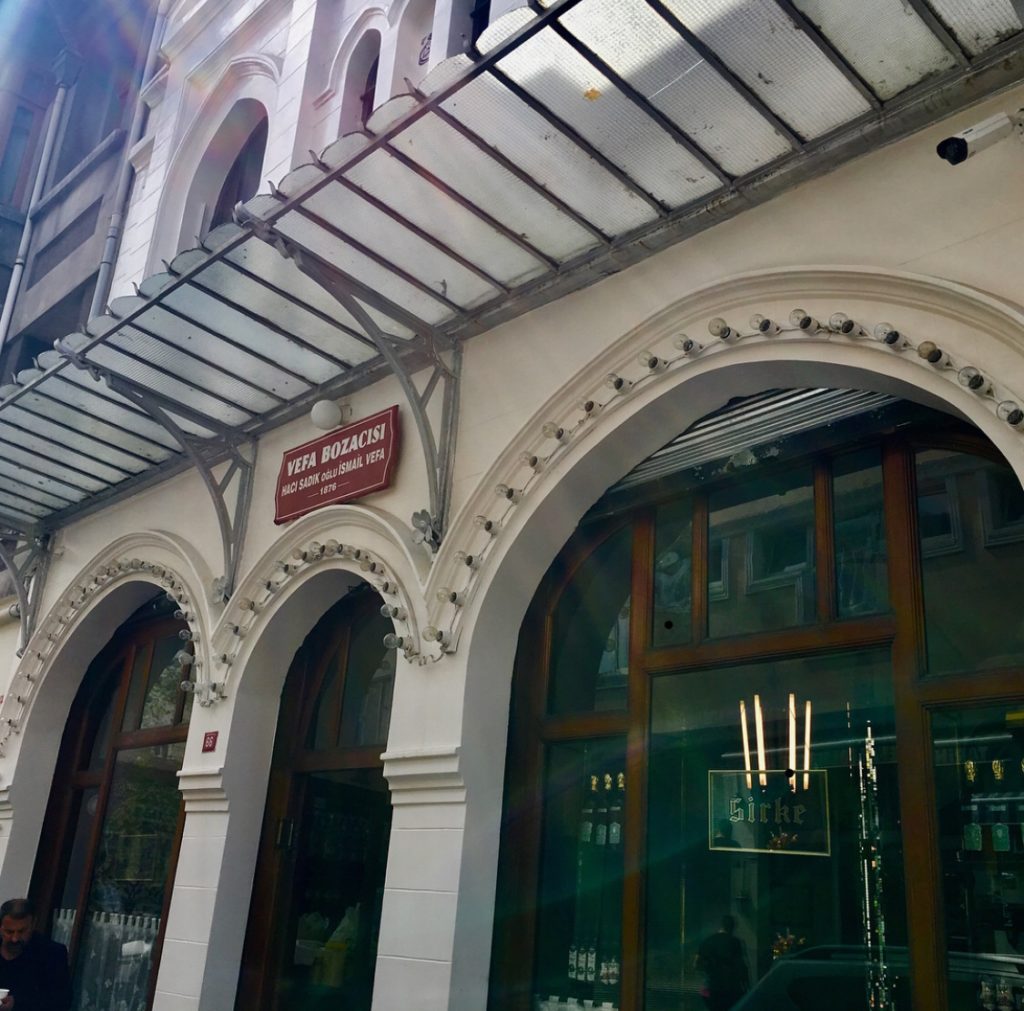
With his increasing fame over time, in September 1876 Hacı Sadık Bey opened a shop in the then prestigious district of Vefa. This was the area where the aristocrats and the bureaucrats of the empire lived at the time. He named his establishment as Vefa Bozacısı (the Boza maker of Vefa) which was to become the first official and well established Boza business in the world. Hacı Sadık Bey’s special recipe was passed on to the following generations. Today, the fourth generation is running the business successfully and the legendary taste is still pleasing knowing palates.
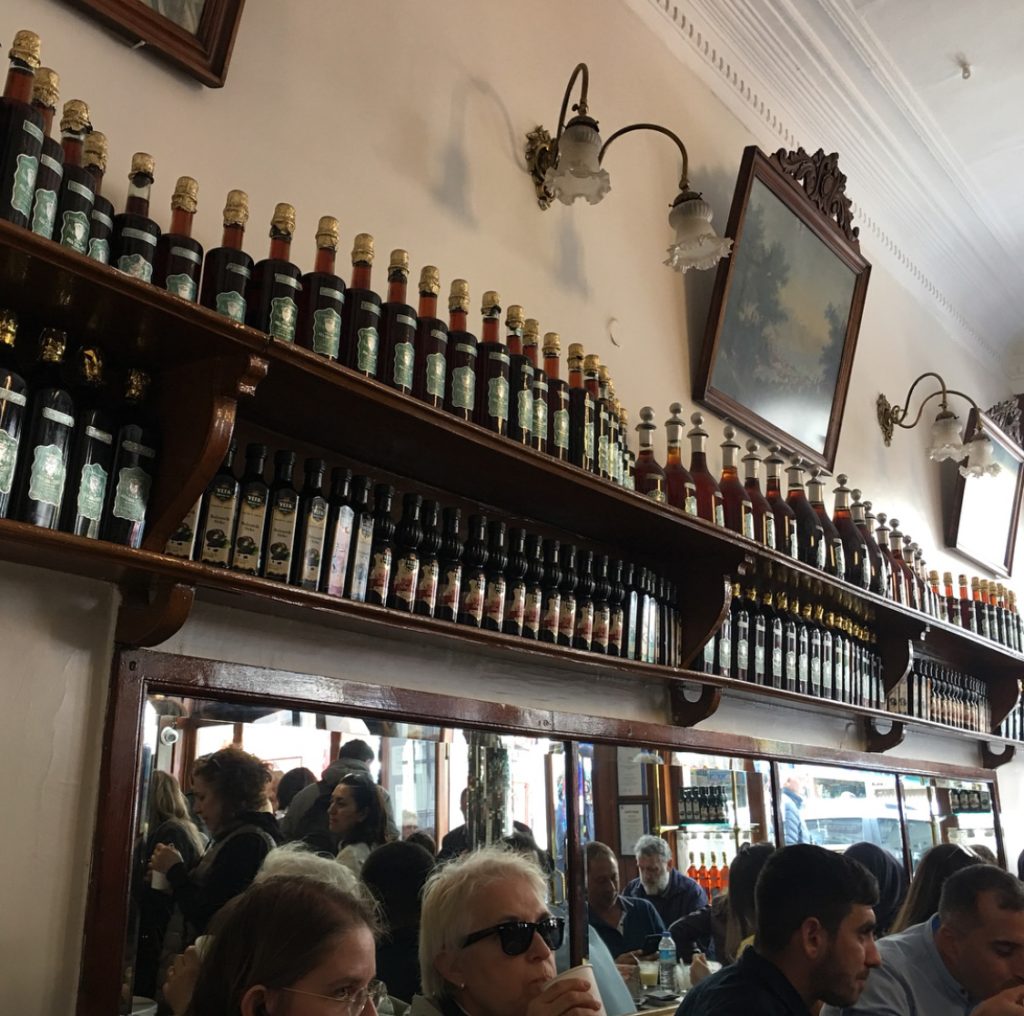
The company also produces different types of vinegar and sauces.
The Vefa Bozacısı (at Vefa Avenue No: 66) is worth a visit if you come to Istanbul. You can put this shop on your itinerary on the day you plan to visit the fascinating Süleymaniye Mosque of Sultan Süleyman the Magnificent (1495-1566). Taking a walk around the area will also give you an idea about an old Ottoman district of Istanbul. It is evident from the rundown houses with typical Ottoman architecture that the place saw better times. Fortunately, some of these are being renovated now.
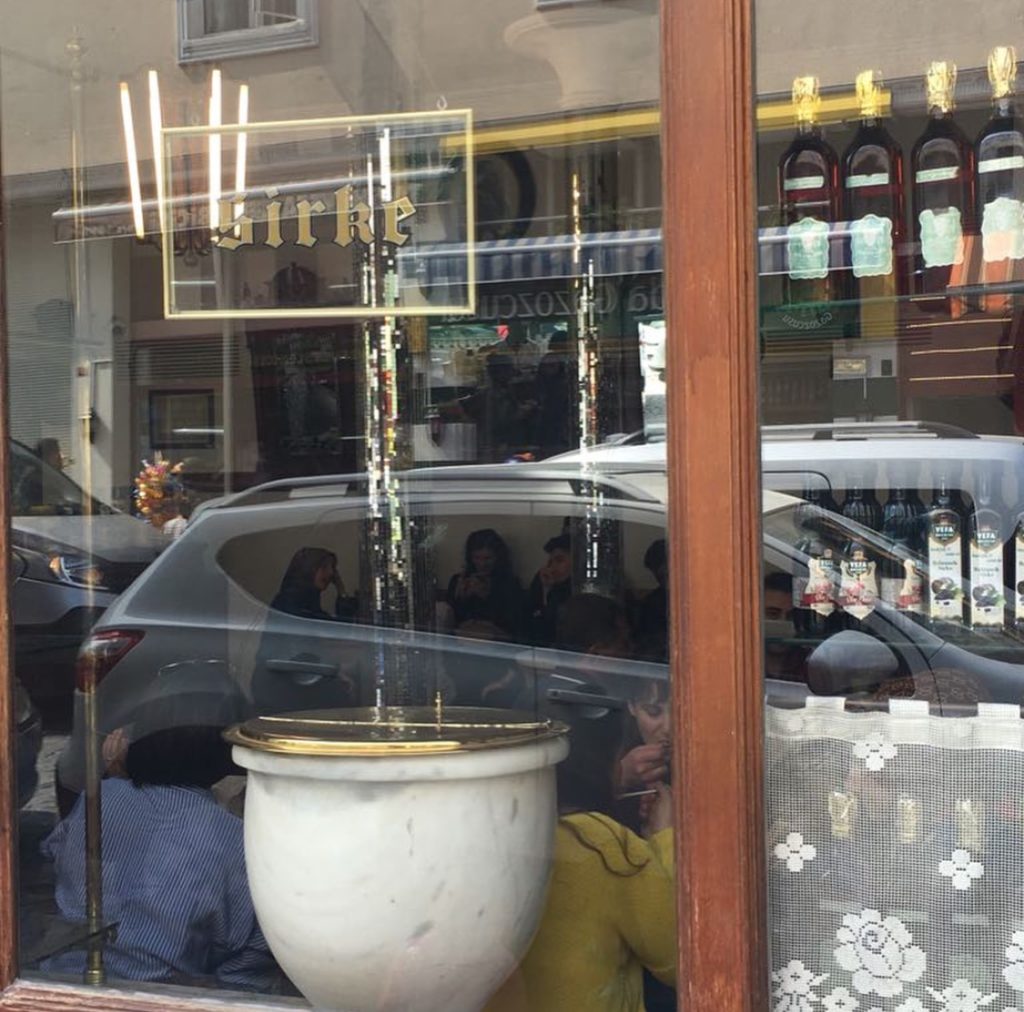
You will recognize the shop from a distance since it is almost always busy with locals and tourists. In summer, when Boza is not produced, the main beverages are natural lemonade, Şıra (traditional drink made from grapes), Ottoman Şerbet (a sherbet made of grapes, tamarind, cinnamon, clove and ginger) and tamarind (demirhindi) sherbet.
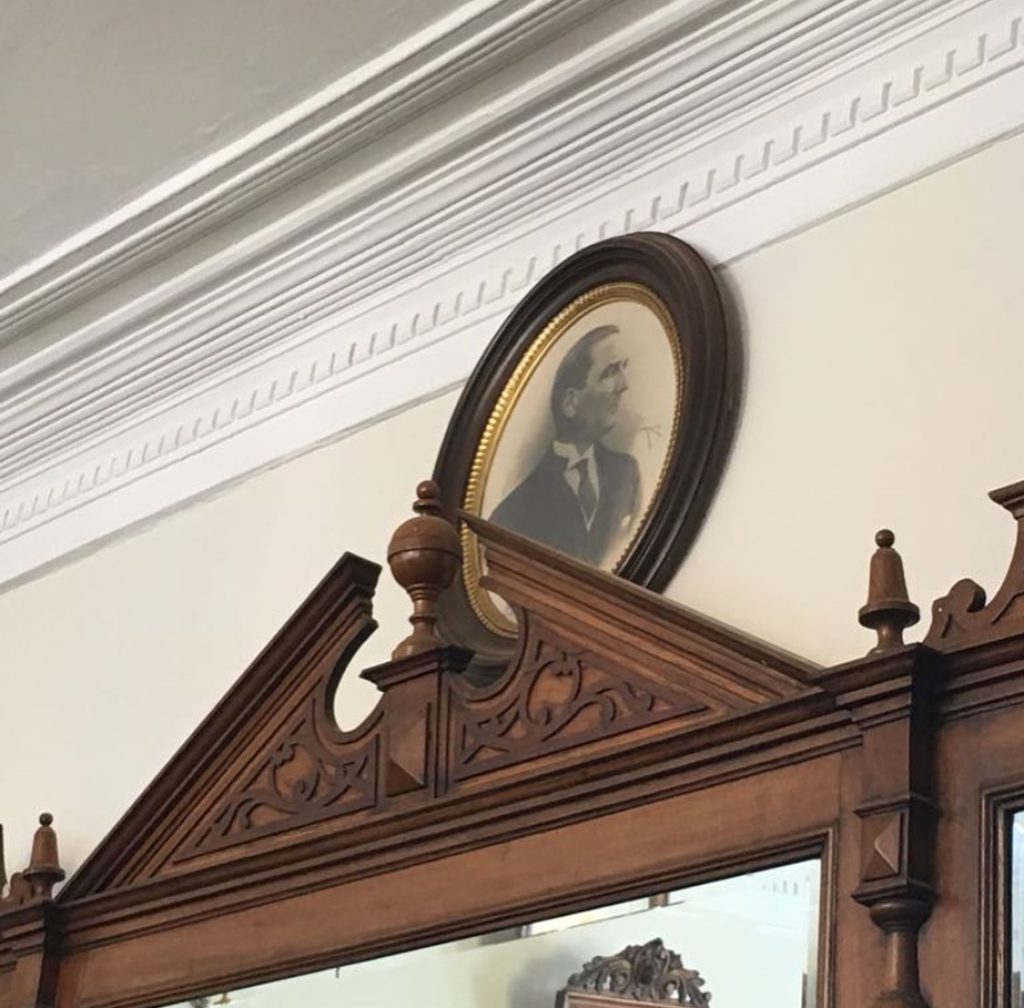
The marble topped tables, the furniture and the mirrors inside Vefa Bozacısı take you back to old times. Boza is served in tall glasses with cinnamon sprinkled on top and roasted chickpeas on the side. Some prefer to sit and spend time in this place, trying to have a feel of old times while others are more in a hurry. Just giving a short break during a busy day. No doubt, the visitor that the establishment takes most pride in is Atatürk, who visited this renowned place in 1937. You can see the glass with which he drank his Boza, kept in a bell glass next to his portrait, high up on the wall.
